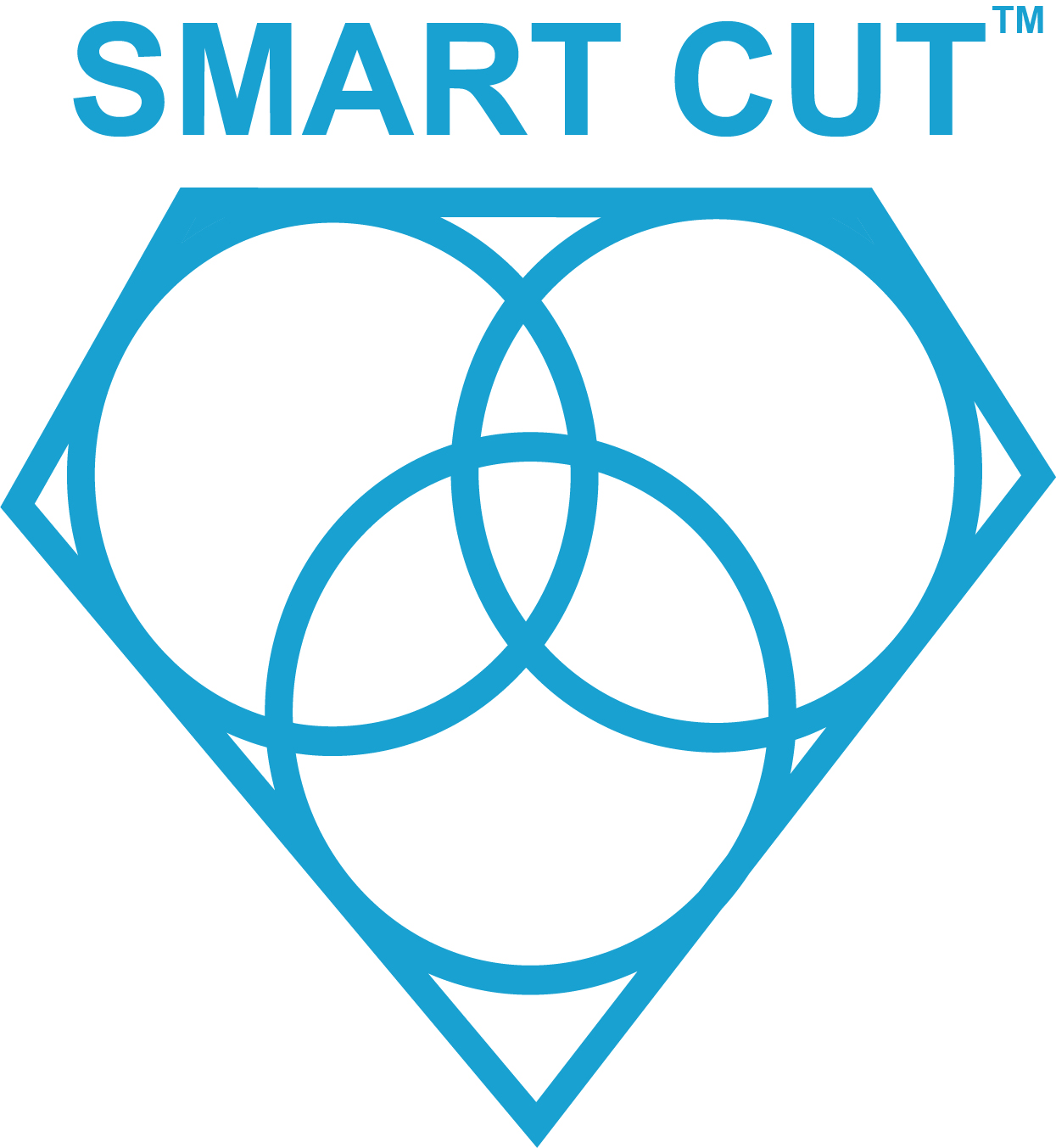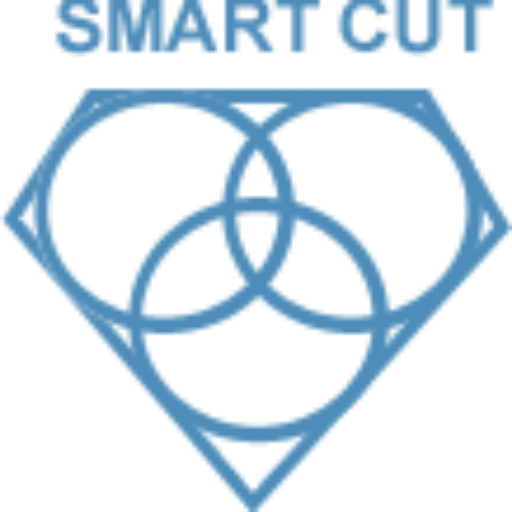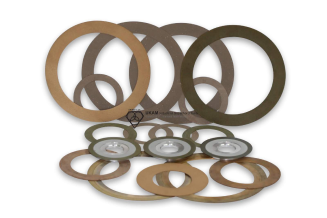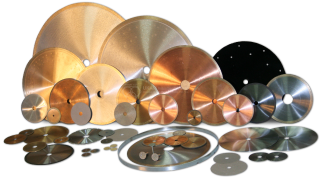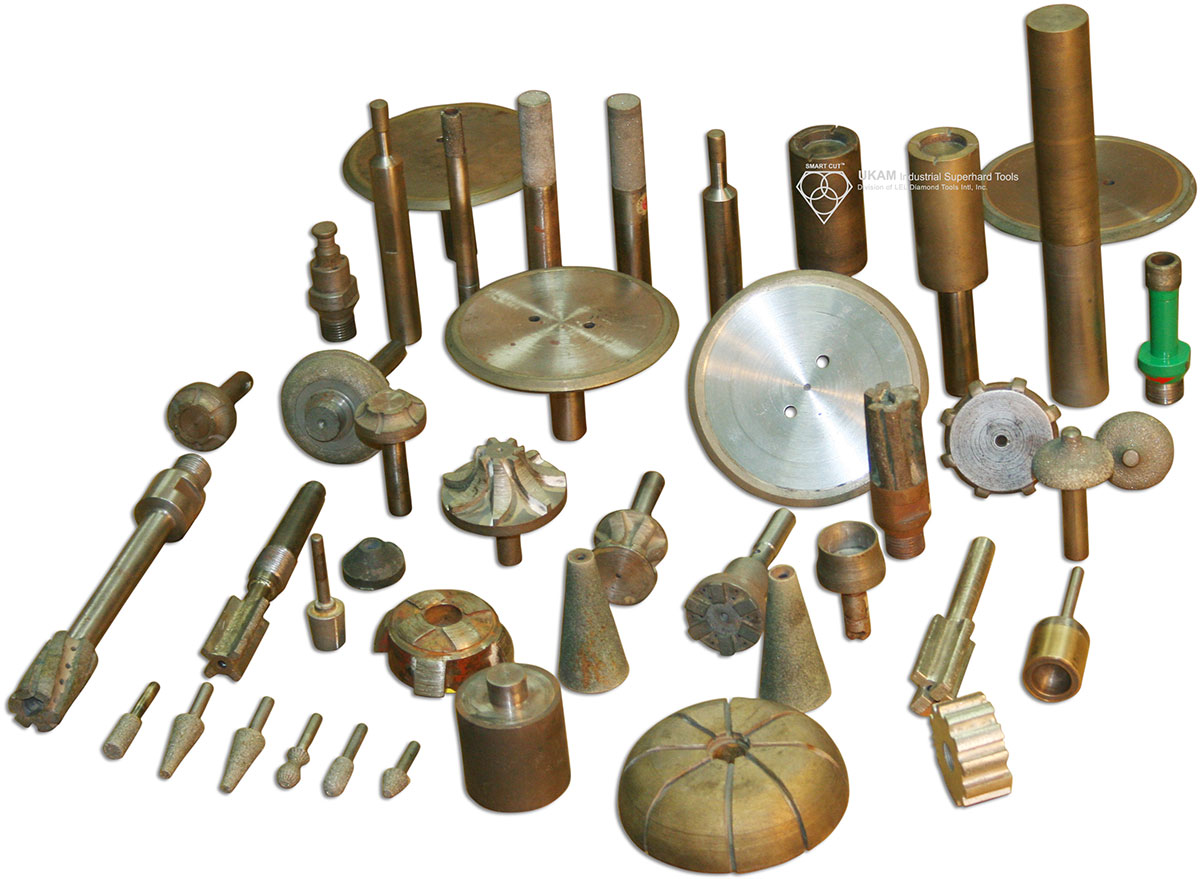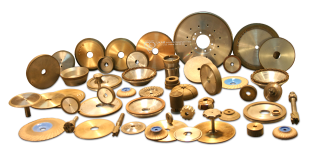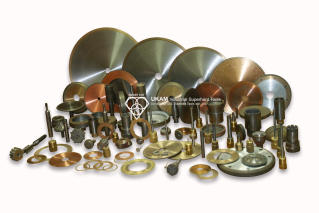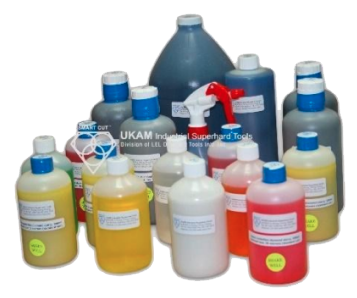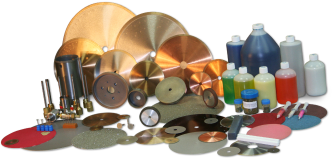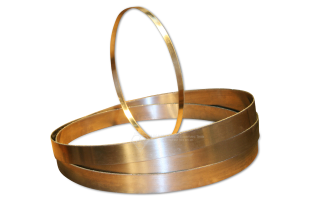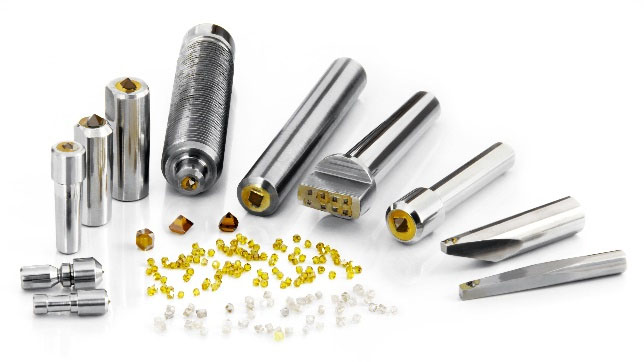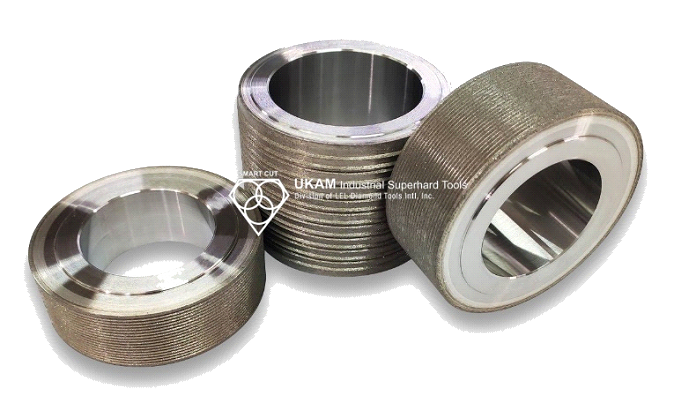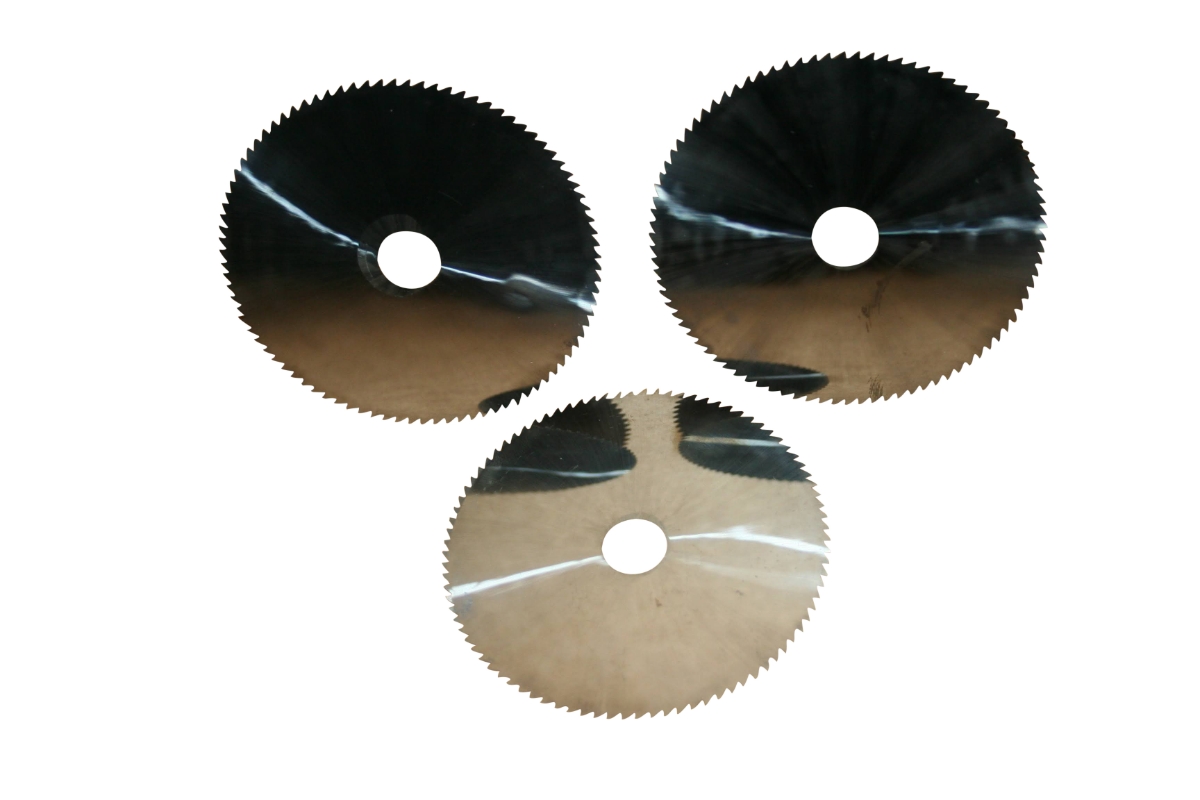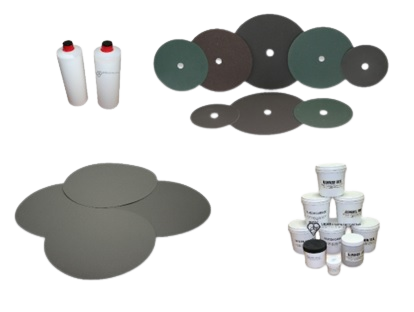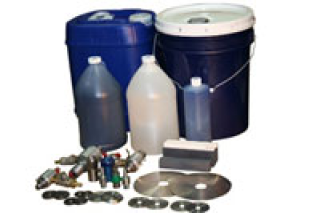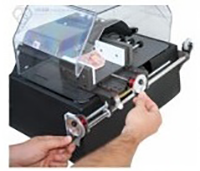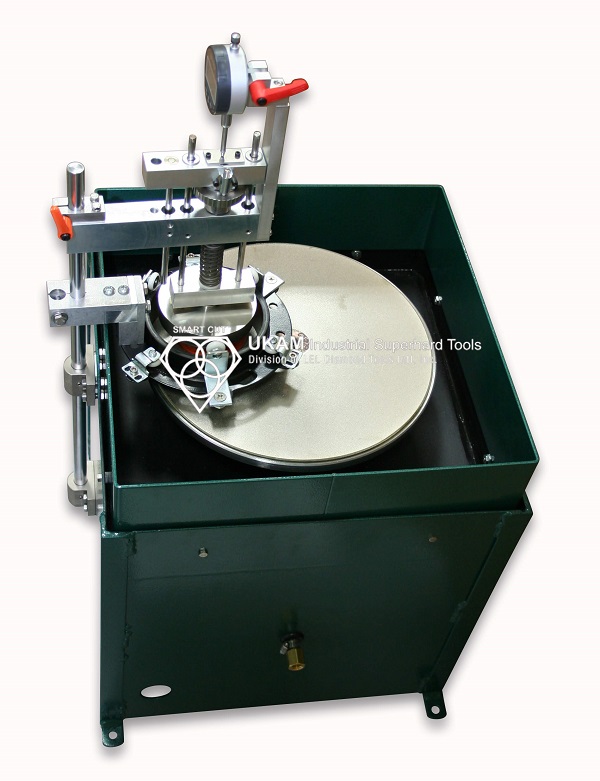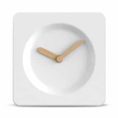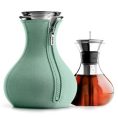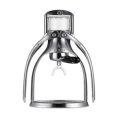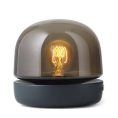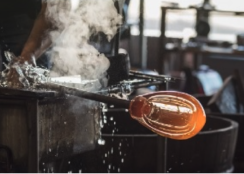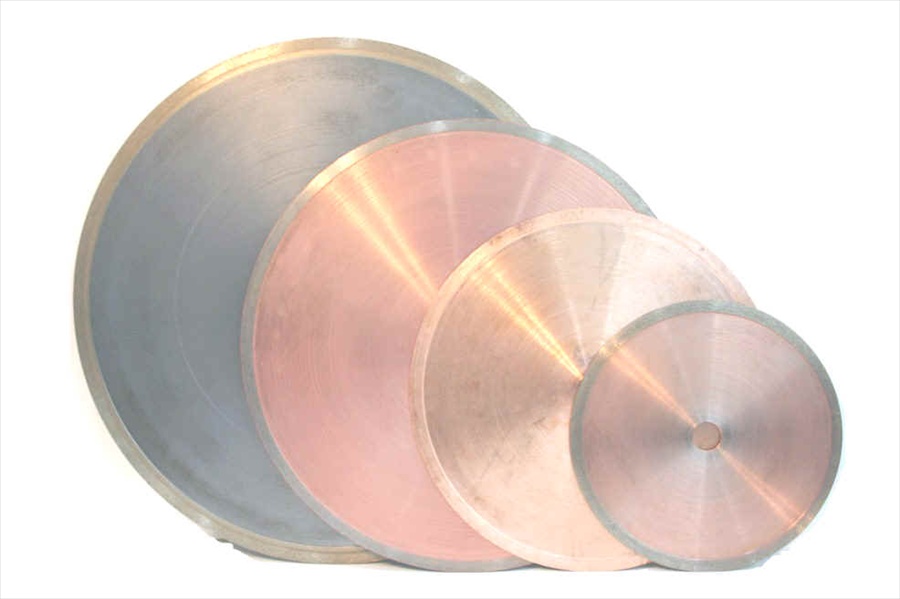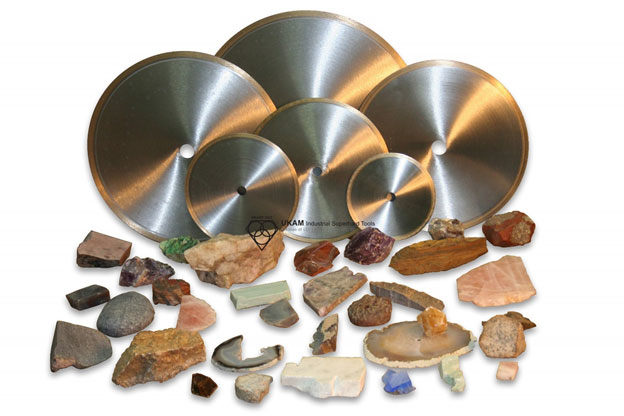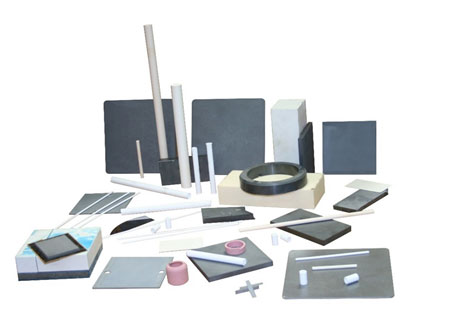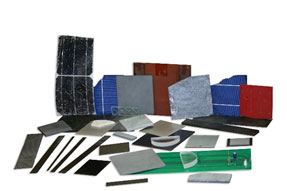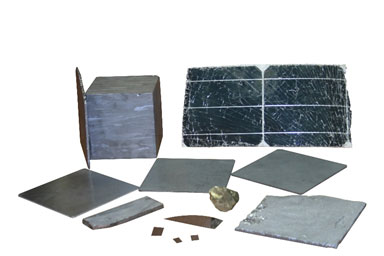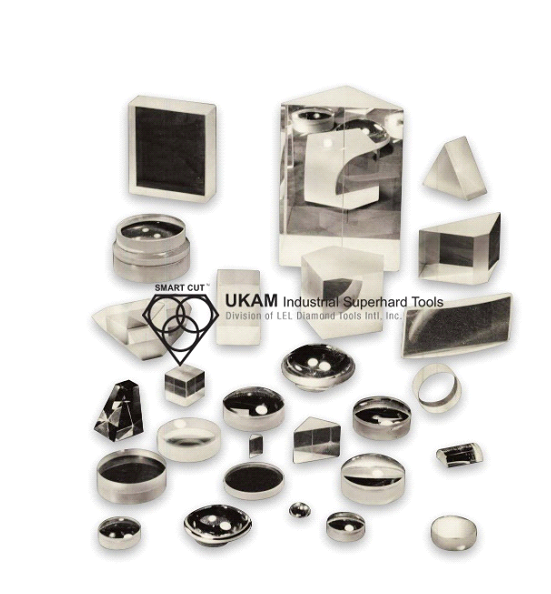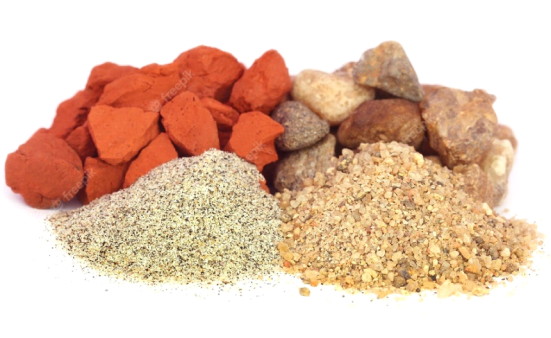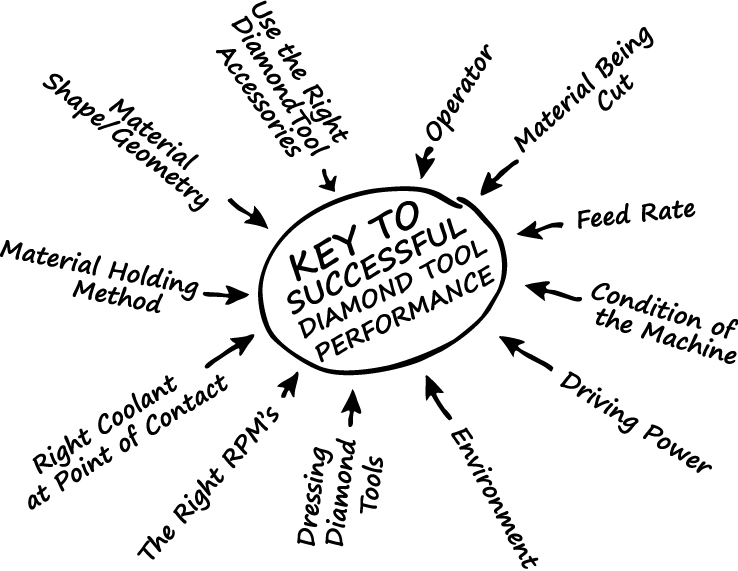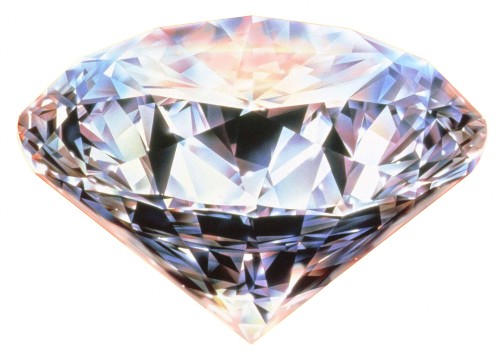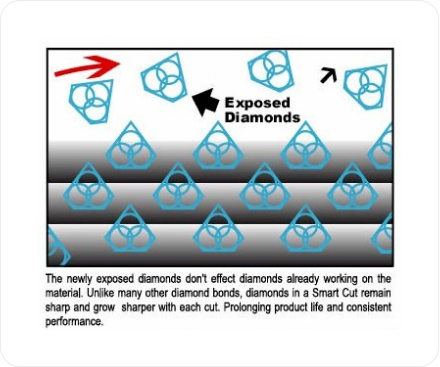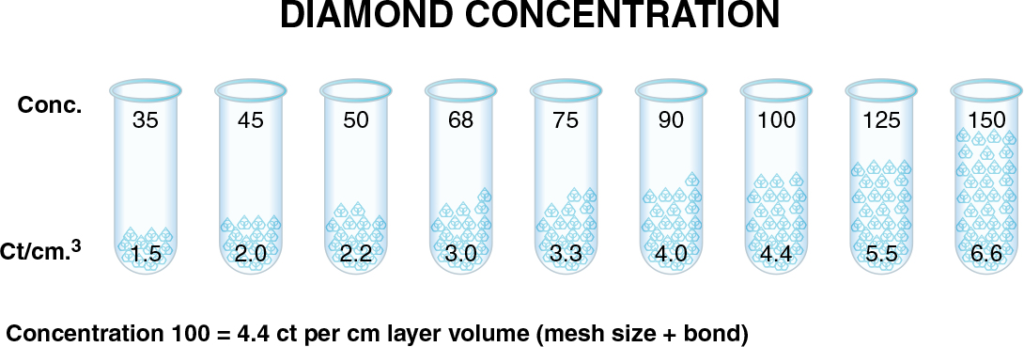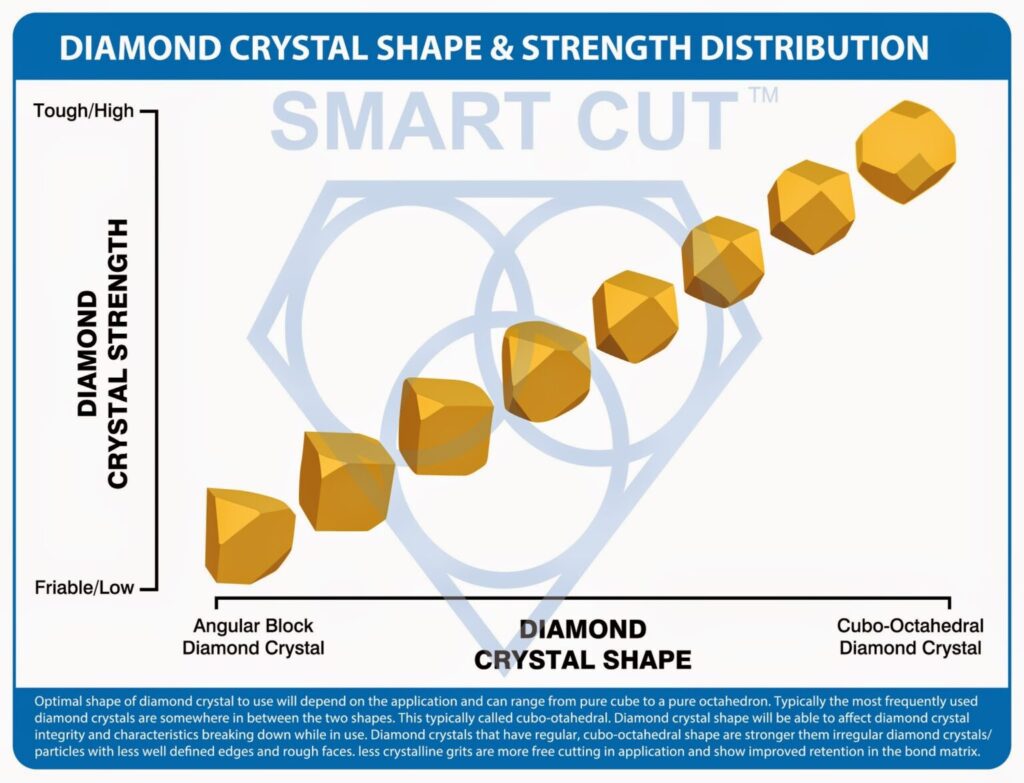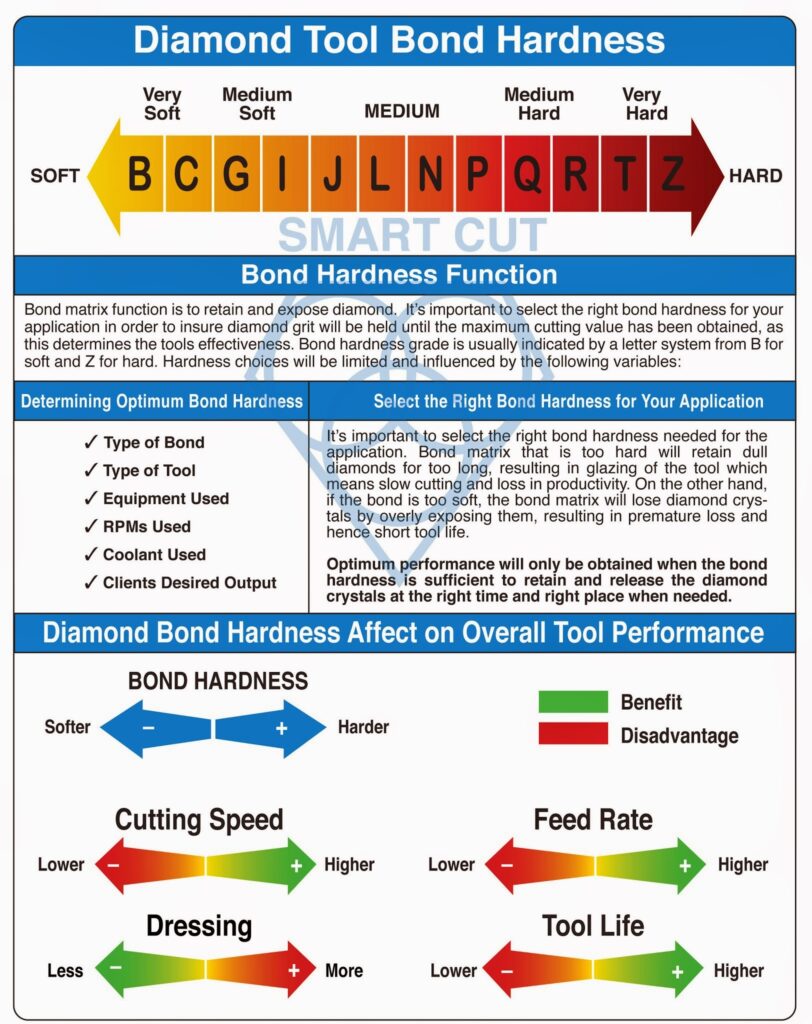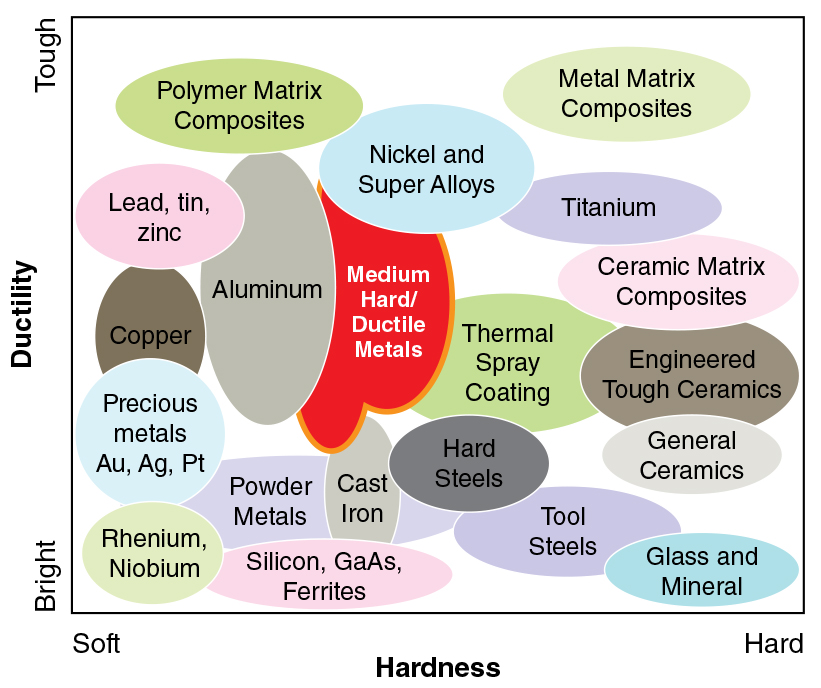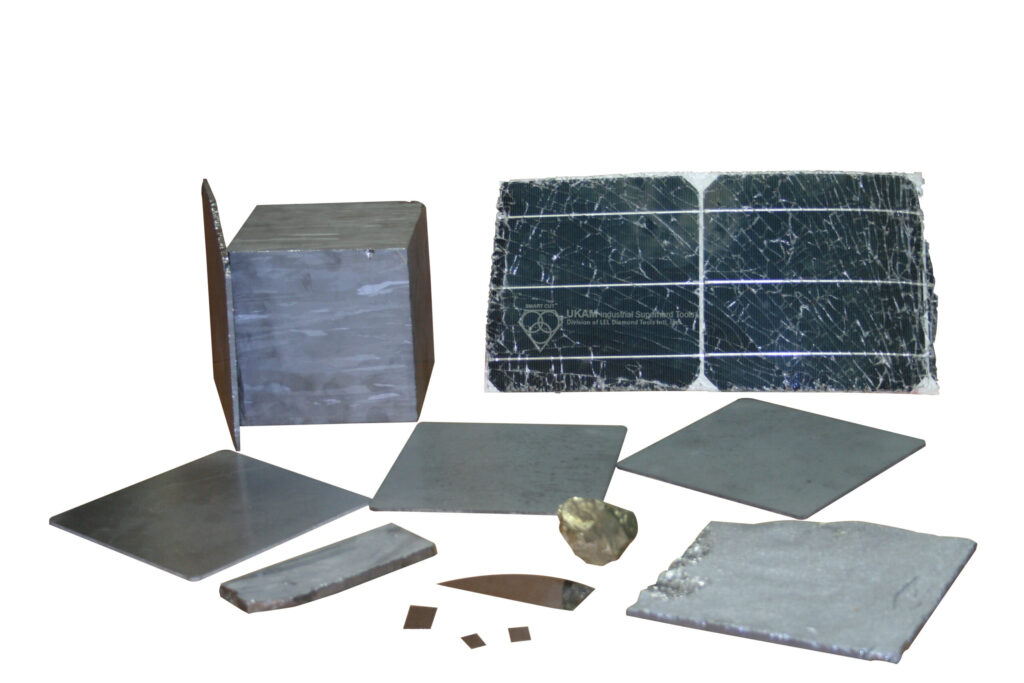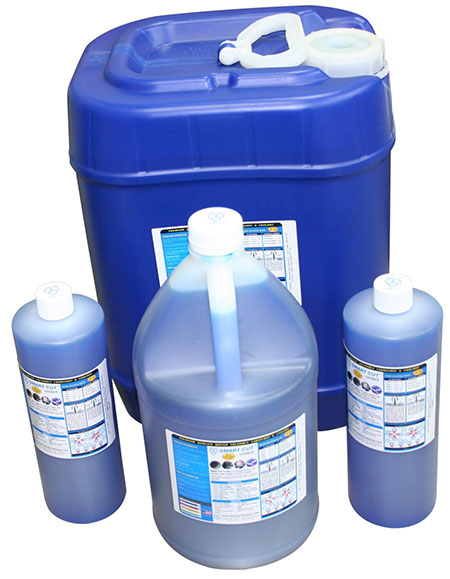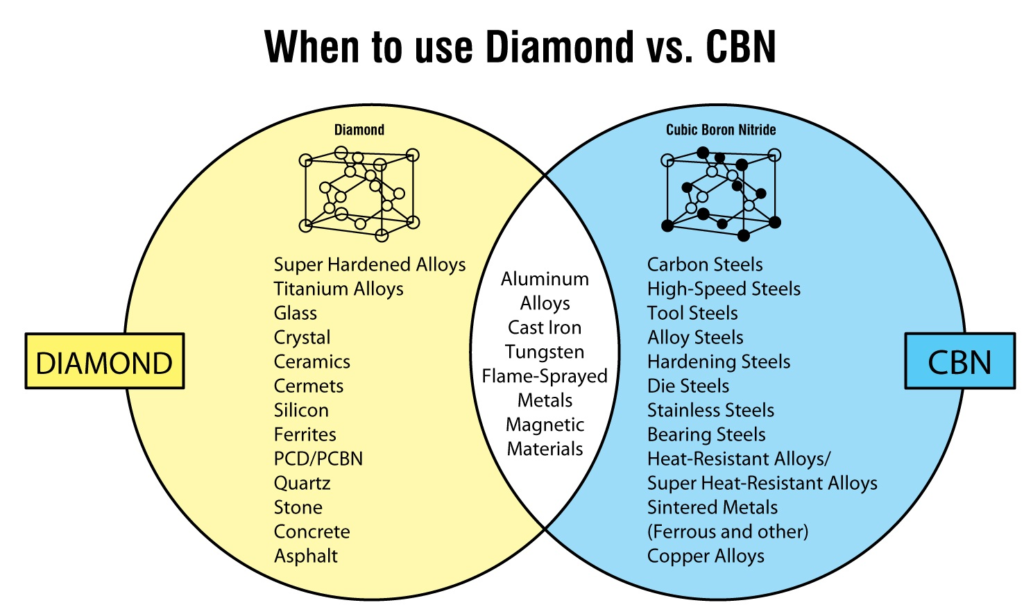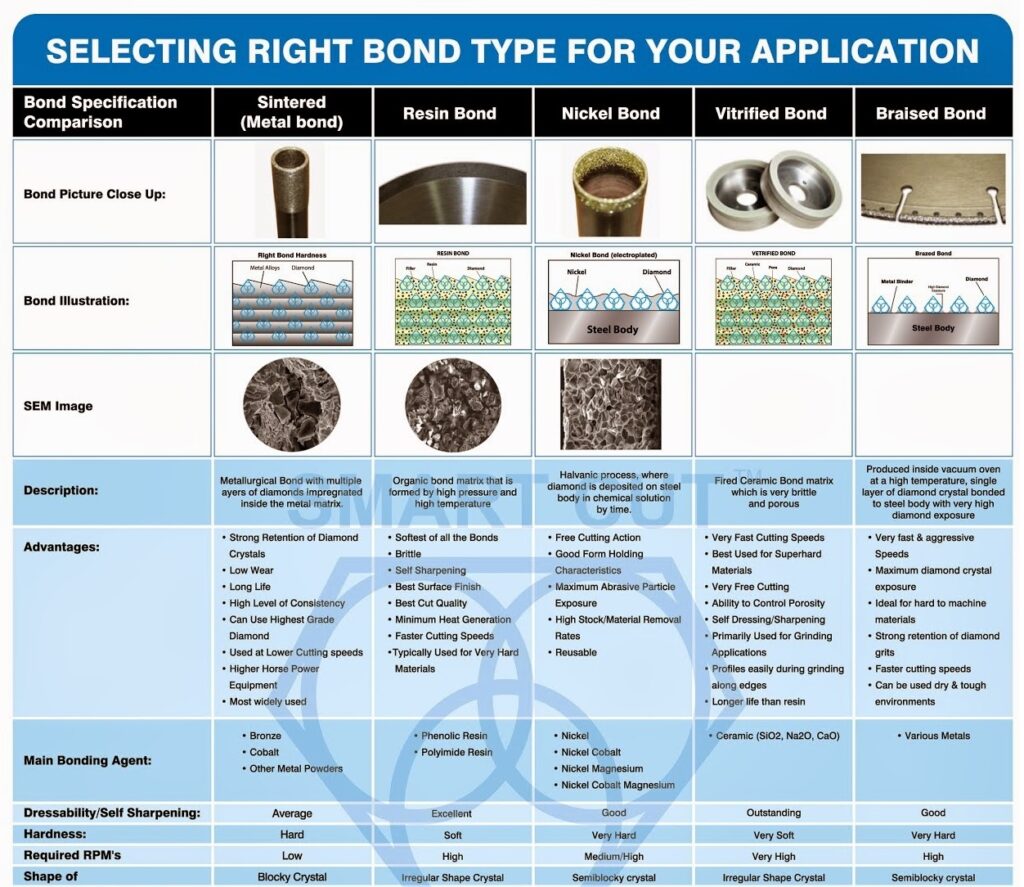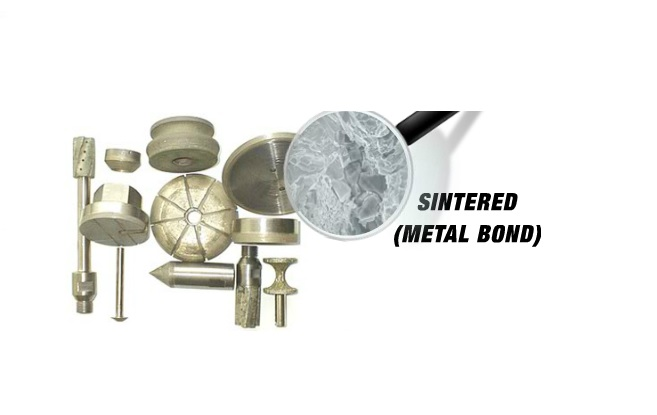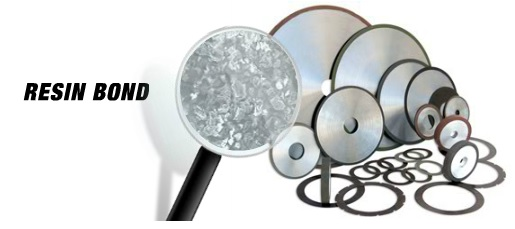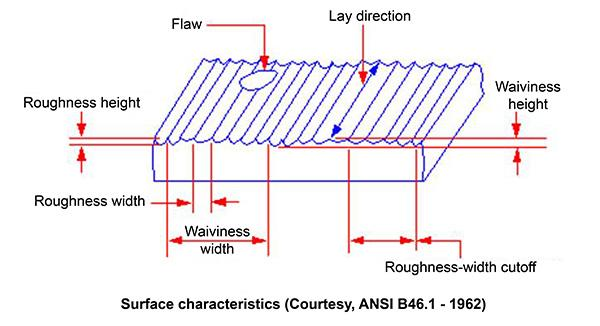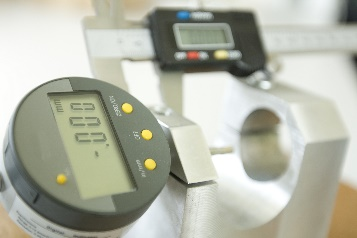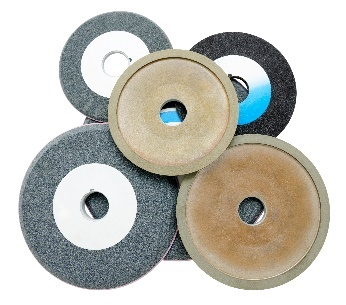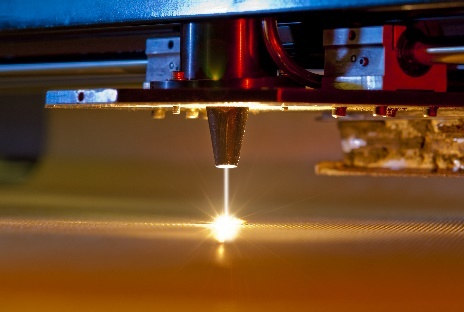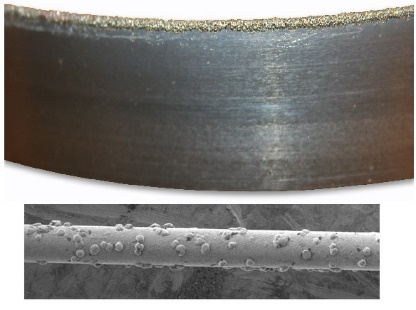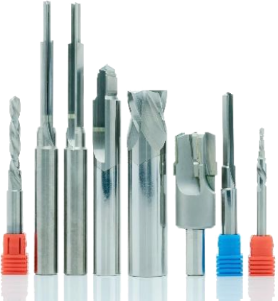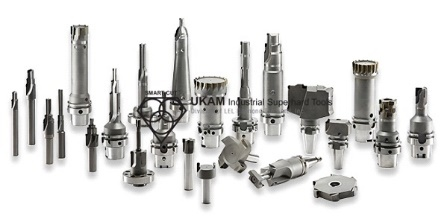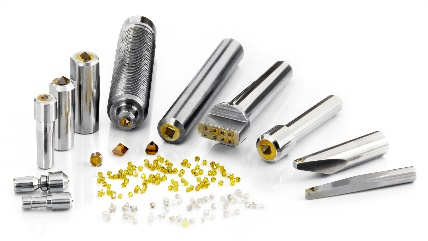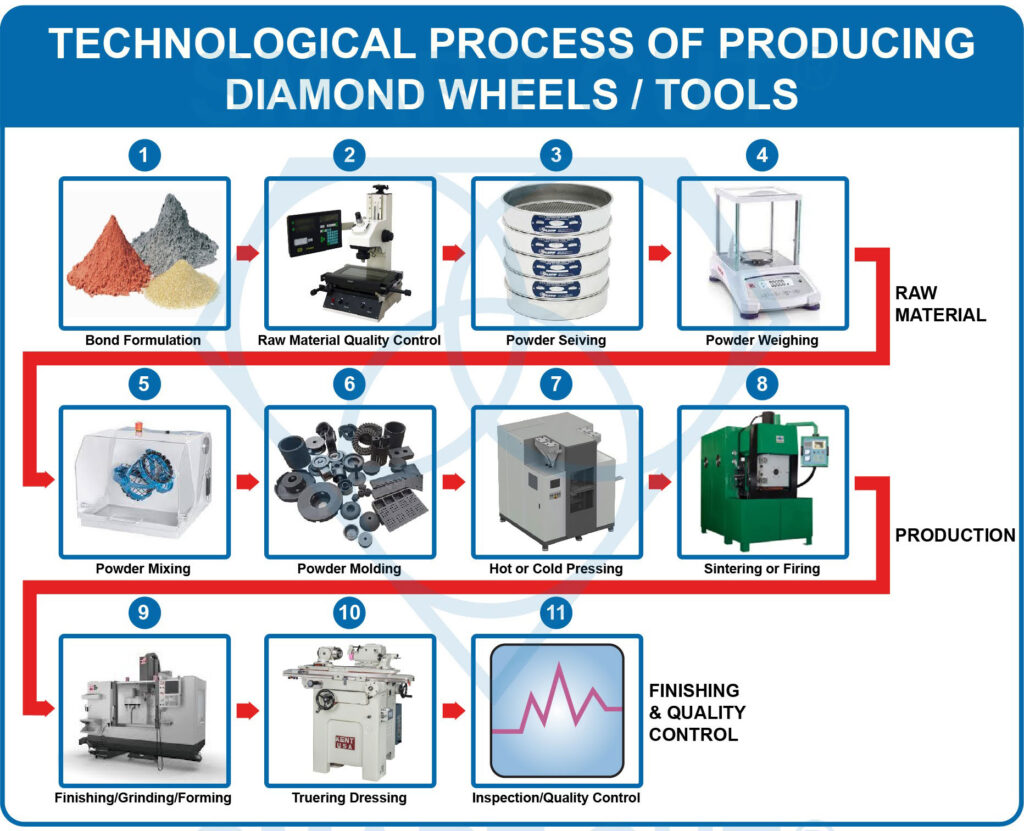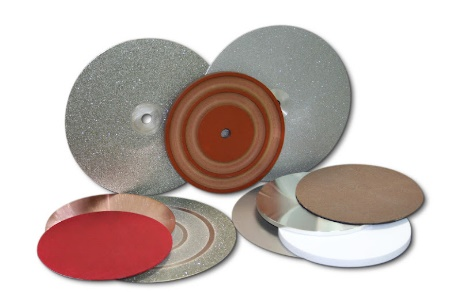Material mounting, properly securing material in place is one of the first and most important steps in the micro process. The function of the material mounting / holding method is to keep the sample/material firmly in place, preventing it from moving. For this reason, it is very important to use the right mounting method for your specific application/requirements.
There is large variety of mounting methods available to best suit each material/application. Selecting the right material holding method will play a major role in optimizing your diamond cutting, drilling, grinding and machining operation to ultimate level of efficiency.
When material is to be cut or drilled partially (not all the way through). The mounting method to use is of little importance. However when drilling all the way through the material there will be many variable in play that need to be controlled in order to achieve best results.
Material holding method will depend on your beginning material dimensions, desired cut depth, and material properties (hardness, brittleness, shape/geometry). Your goal should be to have good and uniform contact between material and holding method (such as clamp/fixture, wax, or tape). Material should lie flat, without presence of any air bubbles, dust or dirt particles between material and its mounting.

MECHANICAL CLAMPING/FIXTURING

TAPE MOUNTING WITH VACCUM CHUCK

DOUBLE SIDED ADHESIVE TAPE

WAX/GLUE MOUNTING TO MEDIA

WAX/GLUE MOUNTING TO MEDIA
Application
Advantages
-
 Accommodates irregular shape materials
Accommodates irregular shape materials
-
 Can hold substantially much thicker materials
Can hold substantially much thicker materials
-
 Very Inexpensive
Very Inexpensive
-
 Readily Available almost anywhere
Readily Available almost anywhere
-
 holding characteristics
holding characteristics
-
 No lip effect
No lip effect
-
 Substrates not perfectly flat can be mounted
Substrates not perfectly flat can be mounted
-
 Different hardness base media can be used to control tool tool wear and simultaneously dress the tool
Different hardness base media can be used to control tool tool wear and simultaneously dress the tool
Accommodates very small & micro parts that would have not been possible by other methods
Disadvantages
-
 occasional chipping and material blow out at exit of the material
occasional chipping and material blow out at exit of the material
-
 possible vibration
possible vibration
-
 limited by material dimensions
limited by material dimensions
Limited in application (only at lower speeds and feed rates)
MECHANICAL CLAMPING/FIXTURING


Mechanical clamping is typically used when geometry of material being mounted is too thick to be hold by vacuum chuck or other methods or / and is unevenly shaped, that other mounting methods cannot be used. This method also offers number of advantages for more standardize/flat materials in ease of use, loading, and unloading. Some challenges of material chucks and holding fixtures is occasional chipping and material blow out at exit of the material (whether your are cutting through or for drilling operations exiting the hole). The problem is the backside of material does not have firm support at cutting/drilling zone, therefore creating higher chipping rate when the diamond tool (diamond cutting blade, drill or wheel) exits the cut or hole. Another issue with mechanical clamping is too much exposure due to the mechanical clamps thickness over the material. This can cause vibrations and will affect the cut quality. See illustration below:
When material is hold in chuck/clamping fixture it should not move while being worked on. Any movement of material can damage or break the diamond tool or material itself. At the same time the sample time the micro drilling machine operator must take precaution to not over tighten material. Doing so may possibly damage the chuck/holding fixture or material itself. Some of the more brittle materials such in the glass and refractory families can fracture if over tightened in chuck/holding fixture.

Where the harder and more denser materials such as silicon carbide may cause dents in the chuck if excessive force is applied. Dents or nicks in the chuck will affect the materials drilled in same chuck causing damage and possible cracks. Using a vise is not always an option for certain materials and shapes. Some soft or thin materials can be damaged or bowed by a vise. For these more fragile and sensitive applications use of vacuum chuck in conjunction with specialize material holding tape or mounting material on substrate with vice may be more appropriate solution. There are many different vice types and designs to hold various part dimensions and shapes, offered by dozens of material workholding manufacturers to fit various types of machinery.
V-Blocks hold and support round materials such as tubing or rods for cutting or drilling. V-Blocks come in many different sizes and dimensions. Usually these are clamped directly to machine table
Holding Fixture / Chuck Padding
Padding can help prevent damage of material hold inside chuck and the chuck itself. Padding serves many functions including: protecting material, protecting chuck/material holding fixture, avoids material shifting when pressure is being applied, buffers from damaged/nicked areas of the chuck/material holding fixture..
TAPE MOUNTING WITH VACCUM CHUCK


Vises have a theoretically infinite amount of pressure that can be applied to material. Where vacuum chucks rely on the atmospheric air pressure around us to press the material downward against the chuck surface. Tape is most common and frequently used mounting method for thin material substrates and wafers with material thickness under 1 mm. Tapes are preferred for thin and brittle materials because of their ease of use, ease of handling. Tapes come in large variety of specifications, thicknesses, compositions, and levels of adhesion to suit almost any application. Tapes come in also different strength levels: Low strength, medium strength, and high strength tapes. The most commonly used tape for dicing application is a P.V.C. .003" (0.076mm) thick with a combination of P.V.C. sheet and an adhesive applied to the top side of the tape. Mounting is done manually or utilizing specialized wafer mounting systems. Thicker tapes are available, up to .010" (0.25mm). These tapes are designed for special applications, but they cannot be used on die bonding systems.
Tapes are available with different adhesives with what is called “tackiness characteristics”. Adhesion characteristics of the most common tapes are 215-315 fr/25 mm. Tape thickness varies depending on application and material/substrate being worked on. For example for silicon wafers tape thickness of .010” (0.25mm) is typically used, where for thick alumina substrates tape thickness of .080 (2.03mm) is implemented. Determining which tape to use for your application, sometimes may involve some trial and error. For example the length of time the material or wafer will stay in contact with the mounting tape before and after using will determine whether to use medium or high strength tapes.
Wafer/material thickness is another consideration when selecting the right mounting adhesive. Very thin dies work well with waxes and medium strength tapes. Whereas, thicker wafers work better with medium to high strength tapes. Cutting or drilling too deep into the mounting media will cause the drill to “load”. Minimize the depth in which the drill touches the mounting media. It is recommended to cut/drill no more thane twenty five microns into the media. Cutting or drilling too deep into the media will cause premature tool failure. The tool can also agglomerate with the cutting media, resulting in chipping.
Double sided adhesive Tape

Double-back adhesive tape has been used for many years to hold thin parts during surface grinding. This material mounting method can be effective, only when horizontal shear forces are light. The geometry and composition of many materials however, limits the use of tape during many applications. Another set back to using double sided tape, is the time needed to remove it and possibility of losing material flatness/rigidity to very thin parts and substrates.
WAX/GLUE MOUNTING TO MEDIA

Very small and difficult to clamp/fixture materials can be hold in place with wax to allow for easier holding/clamping while being worked on. Waxing or gluing material to solid media is usually one most reliable, oldest and preferred form of mounting. Wax/glue mounting offers the following advantages:
-
 Improved holding characteristics, specially when working with thin material substrates/wafers
Improved holding characteristics, specially when working with thin material substrates/wafers
-
 No lip effect – capability to cut or drill into much deeper into the base material. This typically results in better surface finish quality, specially on backside of material.
No lip effect – capability to cut or drill into much deeper into the base material. This typically results in better surface finish quality, specially on backside of material.
-
 Substrates not perfectly flat can be mounted. The wax/glue compensates by filling in the gaps
Substrates not perfectly flat can be mounted. The wax/glue compensates by filling in the gaps
-
 Different hardness base media can be used to control tool tool wear and simultaneously dress the tool. Common base media used is glass or ceramic.
Different hardness base media can be used to control tool tool wear and simultaneously dress the tool. Common base media used is glass or ceramic.
Wax mounting is typically used for mounting very thin and brittle materials. There is a large variety of waxes that can be used for this purpose. Most wax materials are comprised of natural materials - animal, insect, minerals and vegetable. Some are made from synthetic materials. These are typically available in lumps, molded bricks, flakes, chips and powders. Wax provides best adhesion of material to supporting substrate. Allowing deep cutting or drilling into substrate. This frequently eliminates cracks at the bottom of material. Also wax expands as it fills in the gaps of a non flat substrate. Providing best adhesion of material, equates in superior surface finish quality and consistency.
Waxes have different characteristics including
-
 Melting point
Melting point
-
 Flash point
Flash point
-
 Specific gravity
Specific gravity
-
 Structure
Structure
-
 Hardness
Hardness
-
 Brittleness
Brittleness
-
 Flexible and elastic characteristics
Flexible and elastic characteristics
-
 Surface characteristics (like dry, sticky, oily, slippery)
Surface characteristics (like dry, sticky, oily, slippery)
-
 Others
Others
Some disadvantages of wax mounting is that is a relatively messy process. Specially taking off the material and cleaning it afterwards.
Waxes have various characteristics that make the best suited for specific applications than others. This depends on their melting point, flash point, specific gravity, structure, hardness, brittleness, flexible and elastic characteristics.
Colleting devices

During the last 2 to 3 years there has been ever increasing variety of fixtures being offered for holding micro and minature parts. Among the increasing variety of holding these very small parts. Collets are the simplest and cheapest way to hold microparts. Standard 1C collets with diameters down to 0.010" are off ered. The 5C collets on the market are almost as small, but there are fewer standard sizes to choose from.

